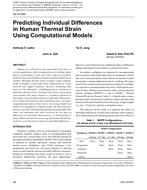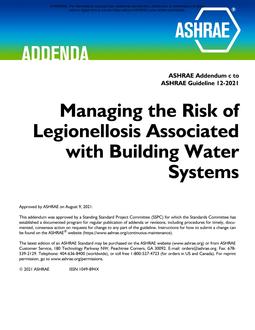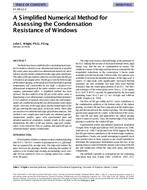A potential problem with conventional hot-gas bypass defrosting is that an excessive amount of the liquid refrigerant leaving the coil may enter the compressor, resulting in compressor failure. This potential problem may be eliminated by incorporating a heat exchanger, termed a “vaporiser”, to evaporate any liquid refrigerant leaving the coil before it enters the compressor. In this heat exchanger, the energy used to evaporate the liquid refrigerant is obtained from the refrigerant leaving the compressor before it enters the coil. A hot-gas bypass defrosting system incorporating a vaporiser has been investigated experimentally and analytically. The theory behind the hot-gas bypass defrosting system was developed to explain the details of the operating characteristics of the defrosting process. An analytical numerical model was constructed to substantiate the theory. Bypass defrosting systems may operate in a steady-state mode indefinitely without adverse effects on equipment.
KEYWORDS: year 1996, hot, gas, bypasses, deicing, evaporators, vaporising, failure, compressors, heat exchangers, refrigerants, leaking, steady state, calculating, measuring, performance
Citation: ASHRAE Trans. 1996, vol.102, part 1, paper number 3972, 385-394, 6 figs., 2 tabs., 7 refs.
Product Details
- Published:
- 1996
- File Size:
- 1 file , 1.1 MB
- Product Code(s):
- D-16548


